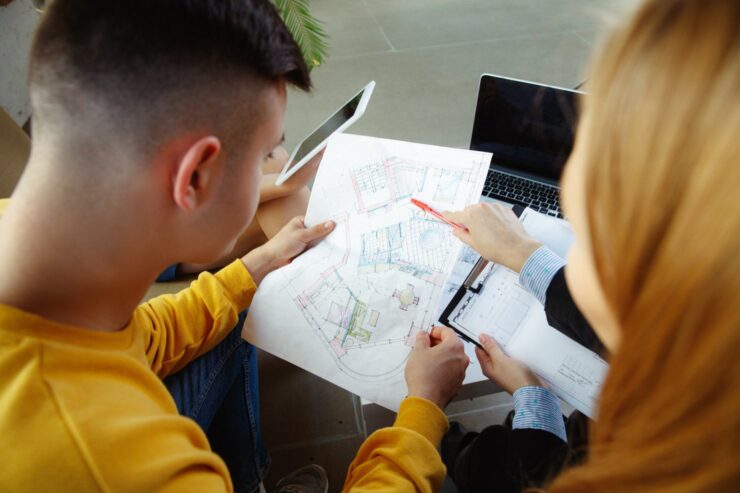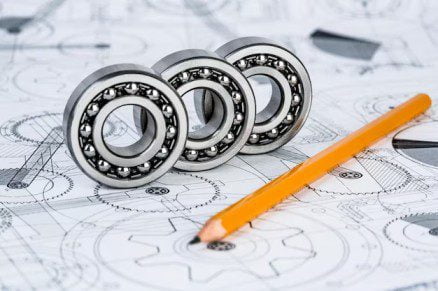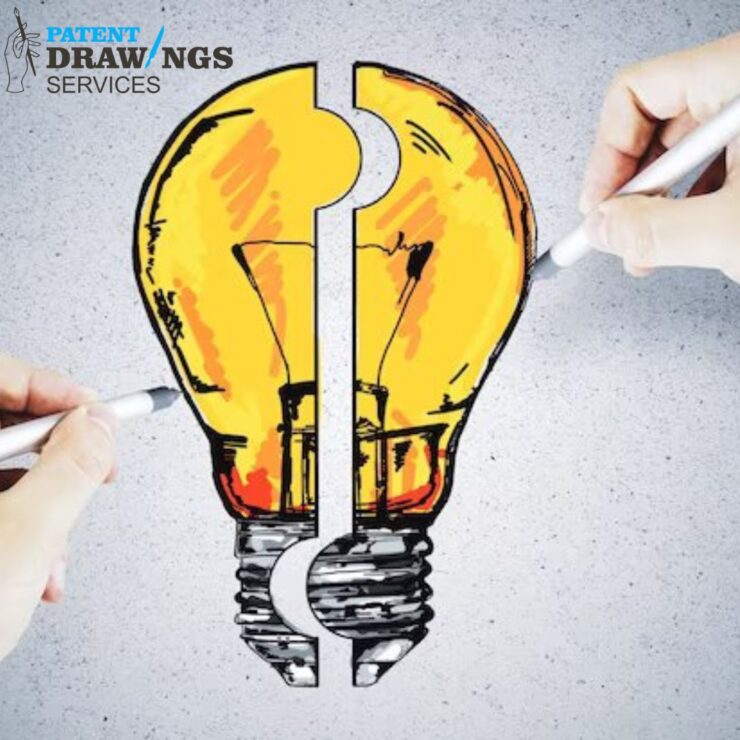As an investor, you want to protect your invention and prevent others from using, making, or selling it without your permission. One way to do this is by obtaining a patent, which is a legal document that gives you the exclusive right to use and profit from your invention for a certain period of time. […]

Introduction
Patent drawings are a crucial component of the patent application process. They serve as visual documentation of an invention, providing clarity and specificity to the technical and design aspects of the innovation. Whether you’re an inventor seeking to protect your intellectual property or a professional assisting inventors in this endeavor, understanding patent drawing standards and best practices is essential. In this post, we will explore the significance of adhering to these standards and offer valuable insights into creating effective patent drawings.
Part 1: The Importance of Patent Drawing Standards
- Legal Requirements and RegulationsThe United States Patent and Trademark Office (USPTO) and other international patent offices have specific requirements and regulations regarding patent drawings. Failure to adhere to these standards can result in a delay in the patent approval process or, in some cases, rejection.
- Clarity and PrecisionPatent drawings must be clear, precise, and detailed. They are expected to depict the invention accurately, enabling someone skilled in the field to understand how to make or use the invention. In essence, patent drawings serve as a visual contract, ensuring the invention is accurately represented.
- Protection Against InfringementHigh-quality patent drawings can help safeguard your invention against potential infringement. They provide a visual record of your innovation, making it more difficult for others to replicate or imitate your work.
Part 2: Key Elements of Effective Patent Drawings
- Accurate Depiction of InventionThe first and foremost objective of patent drawings is to accurately depict the invention. This requires a deep understanding of the invention’s design and functionality. Be sure to include all essential components and elements.
- Technical PrecisionPay meticulous attention to detail. Ensure that dimensions, proportions, and angles are accurate. Technical drawings, in particular, demand precision to convey the workings of the invention effectively.
- ConsistencyMaintain consistency in style and format throughout the patent drawings. This consistency helps in creating a coherent and easily comprehensible set of illustrations.
- Legibility and ClarityLegibility is crucial. Use clear lines, appropriate shading, and labeling to ensure that the drawings are easily understood. Employ standard symbols and notations whenever possible.
- Neatness and ProfessionalismPatent drawings should be neat and professional in appearance. Avoid freehand drawings or excessive clutter. Utilize professional drawing software or tools to maintain a clean and organized look.
Part 3: Common Mistakes to Avoid
- Insufficient DetailIncomplete or overly simplified drawings can lead to ambiguity and confusion. Provide enough detail to fully describe the invention.
- Inconsistent Numbering and LabelingEnsure that the numbering and labeling of elements remain consistent throughout the drawings. This aids in comprehension and facilitates cross-referencing with the written description.
- Non-Compliance with Patent Office RequirementsDifferent patent offices have specific rules regarding the format, size, and type of drawings. Failing to comply with these requirements can lead to delays and rejections.
Part 4: Best Practices for Creating Patent Drawings
- Understand Patent Office RequirementsStart by familiarizing yourself with the patent office’s requirements. Different patent offices may have varying rules regarding drawing format, paper size, and other technical details.
- Hire a Professional Illustrator or DraftspersonIf you lack the skills or time to create patent drawings that meet the required standards, consider hiring a professional illustrator or draftsperson experienced in patent drawings.
- Use Appropriate Drawing ToolsInvest in high-quality drawing tools or software to create patent drawings. These tools offer precision and versatility in creating drawings that meet the necessary standards.
- Label and Reference ClearlyEnsure that all elements in your patent drawings are appropriately labeled and cross-referenced to the written description. This helps the reader understand the relationship between the visual and written components of the patent.
- Review and ReviseReview your patent drawings carefully, looking for errors or inconsistencies. It’s advisable to revise and refine your drawings to ensure they adhere to the highest standards.
Part 5: Conclusion
Patent drawings are not mere technical illustrations; they are the visual key to unlocking the intellectual property protection that inventors seek. Adhering to patent drawing standards and best practices is not only a legal requirement but a means to protect and communicate the brilliance of innovative ideas.
Whether you’re an inventor or a professional assisting inventors, understanding and applying these standards and practices is a fundamental step in securing intellectual property rights, defending against infringement, and ensuring the clear and accurate representation of groundbreaking innovations. As innovation continues to shape our world, patent drawings will remain at the forefront of the process, serving as a visual bridge between ideas and legal protection.
If you have a unique design for your invention and want to protect it, obtaining a design patent in the USA is a smart move. A design patent provides legal protection for the ornamental appearance of an invention, including its shape, configuration, and surface ornamentation. In this comprehensive guide, we will walk you through the […]
The provisional patent application process is an essential step in securing a patent for your invention. It allows inventors to establish a priority date for their invention and provides a year to prepare a complete patent application. Provisional patent applications do not require formal patent claims or an oath or declaration, but they do require clear […]
Patent illustration services are essential for any inventor or business looking to protect their intellectual property through patent applications. These services provide visual representations of an invention, and when done correctly, can greatly improve the likelihood of a successful patent application. In this article, we will explore the importance of patent illustration services, what they […]
As an inventor or patent attorney, filing a patent application is a complex process that requires a lot of effort and attention to detail. One of the most crucial components of a patent application is the patent drawings, which must be accurate and comply with the strict requirements of the patent office. That’s where a […]
As an inventor, you have come up with a groundbreaking idea that you believe has the potential to revolutionize your industry. You have spent countless hours researching, developing, and testing your invention to ensure that it is unique and effective. Now, you are ready to file a patent application to protect your intellectual property. However, […]









